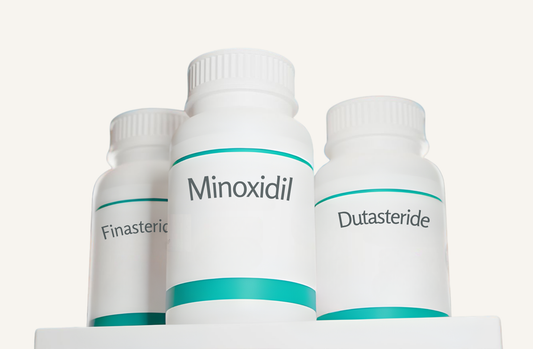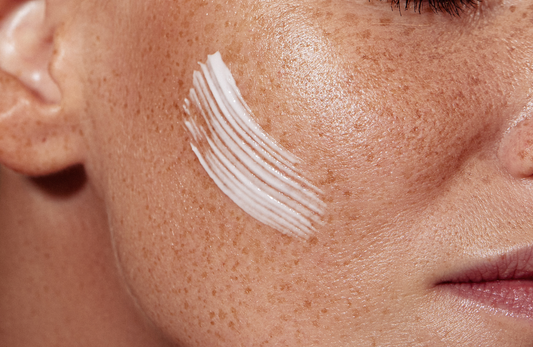When it comes to achieving glowing, healthy skin, the order in which you apply your products really does matter. Still, a lot of people aren’t sure exactly what that order should be. Moisturizer then serum? Serum then moisturizer? What happens if you apply them “out of order”? We’ll get into the optimal order of application, the reasons it’s best to apply serum before moisturizer, and tips on how to combine these products for the best results.
Order Of Application For Skin Care Products
Dermatologists recommend applying products in the order of lightest to heaviest. This means you should start with your skin product with the thinnest consistency, wait for it to absorb fully into the skin, and then apply your products with thicker consistency.1 Depending on how many “steps” your skincare routine involves, this will look a little different for everyone. But if you use a cleanser, toner, and Foundation Skincare products, your routine should look like this:
- Cleanser – Wash your face to remove dirt, oil, and impurities.
- Toner – To balance the skin’s pH and prepare it for better absorption of subsequent products. (Some people find toner to be harsh on sensitive skin. If so, you can skip this step!)
- Serum – Serums deliver concentrated active ingredients deeper into the skin.2 If you’re using FS products, this is the step you’d use the Vitamin C Lotion 20 %. It has the highest available concentration of vitamin C to help brighten skin, but it is thinner than a moisturizer so it should go on first.
- Moisturizer – Moisturizers are thicker and hydrate and lock in moisture. If you’re using Foundation Skincare products, this is when you would apply your Hyaluronic Acid Lotion. This product is generally well-tolerated even for sensitive skin and should lock in the benefits of the Vitamin C serum when applied afterward. Be sure you’re giving your serum at least a couple of minutes to absorb into the skin before applying your moisturizer!
- Sunscreen – We recommend a sunscreen with no less than SPF 30 (or 50 for the face). You should apply sunscreen to protect your skin from UV damage, in the morning.
Why Apply Serum Before Moisturizer?
Serums typically have a lightweight, fast-absorbing texture and are packed with potent active ingredients like vitamins, peptides, and antioxidants. Their primary function is to penetrate deeply into the skin to target specific concerns, such as fine lines, hyperpigmentation, or dehydration.2
Moisturizers, on the other hand, are designed to create a barrier on the skin’s surface to lock in hydration and prevent moisture loss.3 If youapply serum after moisturizer, the moisturizer’s thicker texture might create a barrier that prevents the serum from penetrating the skin effectively.
What Happens If You Put Moisturizer Before Serum?
If you apply your moisturizer before serum, you might notice that your serum doesn’t absorb into your skin as well. The thicker moisturizer can create a sort of barrier on the skin’s surface, which won’t allow the serum to absorb. As a result, the serum’s active ingredients may not be as effective as you’d like.
Aside from impacting your serum’s absorption, applying these two products in the “wrong order,” might just not look as good. This is especially important to think about if you’re applying these products in the morning, perhaps beneath makeup. You’ll want to create a smooth skin surface to work from, but applying moisturizer and then serum may lead to an odd texture.
Serum And Moisturizer Ingredients Not To Mix
Usually using a serum and then a moisturizer is beneficial– however, there are some ingredients that you should avoid mixing to avoid any potential adverse effects. For example:
- Retinoids and AHA/BHA: Combining retinoids with alpha-hydroxy acids (AHAs) or beta-hydroxy acids (BHAs) can increase the risk for irritation and sensitivity, because both products exfoliate the outer layer of skin. If you use Foundation Skincare’s Nightly Renewal Cream, which contains granactive retinoid, and you also want to use products with AHA or BHA , consider applying them on alternate nights or using one in the morning and the other at night.4
- Retinoids and Benzoyl Peroxide: Benzoyl peroxide may make retinoids like the FS Nightly Renewal Cream less effective when used at the same time. There are some exceptions on the market that intentionally combine these ingredients in a stable formula.4
- Retinoids and Vitamin C: Vitamin C may make your retinoid product less effective if layered together. Instead, we’d recommend using the FS Nightly Renewal Cream before bed, then in the morning you can use the FS Vitamin C Lotion after washing your face. This should help prevent skin irritation or sun sensitivity.4
- Retinoids and Salicylic Acid: Used together, these ingredients may dry out the skin and cause irritation. Instead, we’d recommend alternating the use of these products. For example, one night you may use the FS Nightly Renewal Cream, and then the next, use your Salicylic Acid product. That said, you may not need to use both products, as retinoids can help treat acne as well as salicylic acid.4
Best Serum And Moisturizer Product Combinations
We’ve already briefly discussed how to use Foundation Skincare’s products together and in which order, but let’s go over this in more detail. Using the products in this order can help give your skin a boost– while minimizing the risk for irritation.
- Cleanser: The American Academy of Dermatology recommends washing your face morning and night with a gentle, non-irritating face wash.5
- Niacinamide Lotion (optional): Niacinamide is a B vitamin with powerful anti-inflammatory properties. When applied to the skin, it increases the production of ceramides and supports the creation of keratin and other essential proteins.6,7 Foundation Skincare’s Niacinamide Lotion is a relatively thin product, so if you use this product, it should go on straight after cleansing, like a serum.
- Vitamin C Lotion 20%: People used to think that you shouldn’t combine Niacinamide and Vitamin C, however, when done correctly, this can be an excellent combo for the skin. Once your Niacinamide Lotion has absorbed, you can layer in Foundation Skincare’s Vitamin C Lotion. This lotion has the highest available concentration of Vitamin C to help brighten the skin and minimize signs of aging. *At night: Instead of using Vitamin C Lotion at night, you can use the FS Night Renewal Cream at this step. This product contains 2 percent Granactive Retinoid and essential peptide-growth factors. These ingredients can help reduce the appearance of fine lines, acne, and aging. You can either layer this product under or over your moisturizer, depending on how sensitive your skin is. We recommend using retinoids like this at night, since they can make your skin sun sensitive, and Vitamin C products in the morning, since they can help brighten the skin and protect it from environmental toxins.
- Hyaluronic Acid Lotion: If you noticed, hyaluronic acid was not mentioned as an ingredient to be wary of combining with any other ingredients. In fact, HA is considered by most to be safe and well-tolerated. Foundation Skincare’s Hyaluronic Acid Lotion is especially gentle, and expertly crafted to douse the skin with moisture–without any “fad” ingredients. This is Foundation Skicnare’s thickest product, and so should be applied second to last in your skincare routine. It can be safely used with any other Foundation Skincare products.
- Azelaic Acid Cream (optional): Azelaic acid is used for skin conditions like acne, rosacea, and hyperpigmentation. If you choose to include Foundation Skincare’s Azelaic Acid Cream as a step in your skincare routine, you can safely add it in as your final layer in the morning or evening, just after your moisturizer. This product includes 14 percent azelaic acid, which is the highest non-prescription concentration you can get.
- Sunscreen: Don’t forget this vital step in your skincare routine before walking out the door. *At night: At night, obviously don’t worry about applying sunscreen!
If this is too many steps for you, we recommend at least doing the Vitamin C serum, then moisturizer, and sunscreen each morning; and at night, applying the Night Renewal Cream and then Hyaluronic Acid Lotion.
Find more tips and resources on maintaining healthy hair and skin in the FS Blog.
References:
-
https://health.clevelandclinic.org/proper-skin-care-product-order
-
https://www.health.harvard.edu/blog/skin-serum-what-it-can-and-cant-do-2018061214029
-
https://www.colorescience.com/blogs/blog/serum-vs-moisturizer
-
https://www.everydayhealth.com/skin-beauty/skin-care-ingredient-combinations-that-dont-mix/
-
https://www.aad.org/public/everyday-care/skin-care-basics/care/face-washing-101
-
https://pubmed.ncbi.nlm.nih.gov/10971324/
-
https://www.ncbi.nlm.nih.gov/pmc/articles/PMC2921764/




